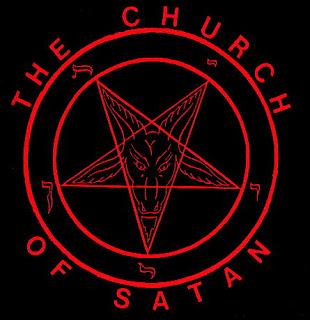Two Forms of Satanism
I want to distinguish between two forms of Satanism so that the reader will understand what I am talking about here and not get bogged down in Christian hysteria or inaccurate media portrayals. There have been way too much of both.
What most of us think of when we heat the term "Satanism" does not really deserve to be called Satanism at all. Think of this as the catch-all category containing all the various forms of unorganized mysticism involving dark, Satanic themes with which many American teenage metal fans are fascinated. This is the form that Christians tend to become hysterical about, to exaggerate, and which the U.S. news media loved to cover in the 1980s and early 1990s. If you lived in the U.S. during this period of time, you'll know exactly what I mean.
I am not proud of this at all, but this is the primary form of Satanism in which I dabbled as a teenage metal fan. I still love metal, the darker and more "evil" the better, but I've outgrown the desire to emulate these darker themes. But back in the day, I was into this stuff. I never sacrificed anything, robbed graves, or did most of the other things that the hysterical news media wanted you to believe was epidemic in the 80s. I did do (and did believe) some pretty ridiculous things back then though. In my defense, this was little more than short-lived experimentation. It did not take me long to move on.
The second form of Satanism is what I want to focus on: the real Satanism. There are several schools of Satanism with some important differences among them. The particular form you've probably heard the most about is the religious philosophy and ritual established by Anton Szandor LaVey in the form of the Church of Satan and described in The Satanic Bible
For the sake of brevity and because it is not my intent to make this an exhaustive exposition on Satanism, I am going to take the liberty of temporarily referring to the Church of Satan and their belief system when I use "Satanism" here. Again, I recognize that there are other forms of Satanism which could be considered "real Satanism" and which depart in some important ways from what I describe here. At some future date, I may come back to them.
If you are not familiar with the form of Satanism involving the Church of Satan, here are some things to keep in mind:
- The Church of Satan came out of San Francisco in the late 1960s, and LaVey's initial following included a magician, a filmmaker, various authors, at least one local politicians, and even foreign royalty.
- These Satanists do not believe in or worship a literal Satan; they use the symbol of Satan to shock, challenge, and unsettle. Satan is merely a powerful image of an adversary.
- These Satanists are atheists and are intensely anti-theistic.
- This form of Satanism explicitly prohibits human and animal sacrifice.
- The Satanic rituals practiced in this particular form are based on psychodrama and are as much if not more about personal transformation than belief in the supernatural.
